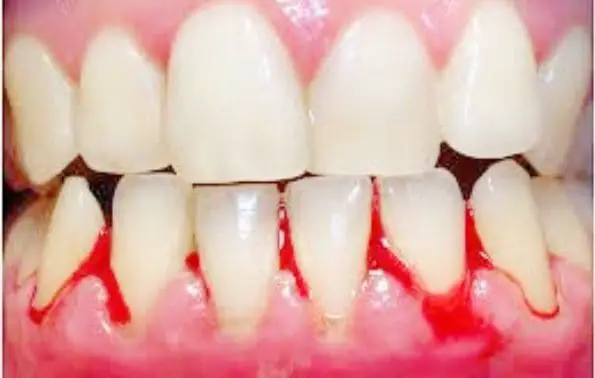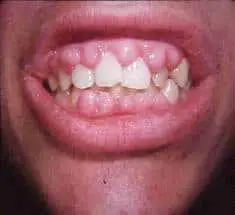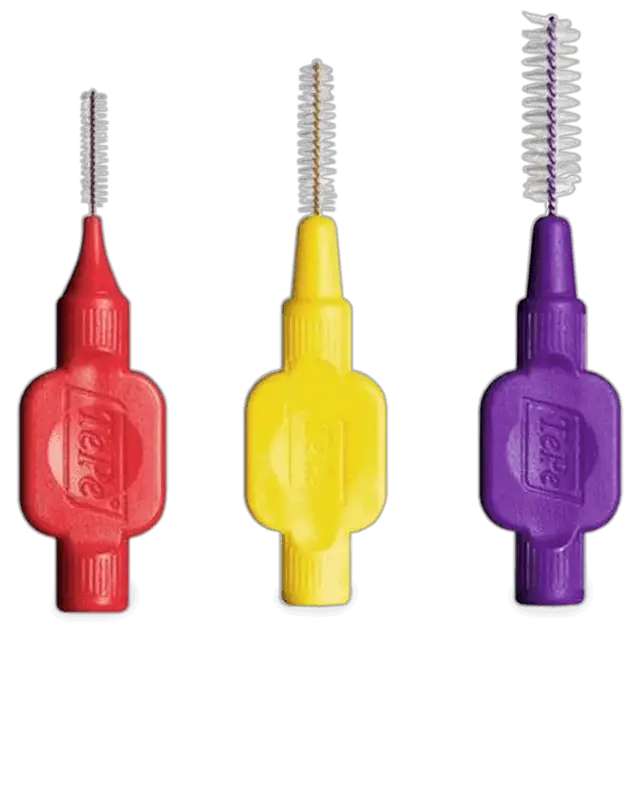After paying many regular visits to your dentist and coming across tons of articles on the internet focusing on flossing, you have finally bought the floss that your dentist swears by!
It’s time for bed, you have brushed your teeth and it’s your first day of flossing.
Remembering how your dentist instructed you to use the floss, you get started. Incisors, canines and pre-molars are done.
But as soon as you reach your first molar and curve it into that c-shape against the gum line, you notice some fresh blood oozing out of that area.
Thinking you might have used it a bit harshly, you don’t pay much attention to it. Now the next day approaches and despite being more careful, the gum of the same tooth bleeds again.
This goes on for a week till you go to your dentist to find out why is your gum bleeding around one tooth when flossing?
Is it the flossing technique or is that tooth infected?
After a close examination your dentist tells you that the color of that particular gum area is redder than the others and it looks like you might have localized gingivitis.
After teaching you the brushing and flossing techniques and prescribing you a medicated mouth wash, they let you go.
But if there are still some more questions that you want to know the answers to, keep reading this article!
Why Does My Gum Bleed When I Floss?

Bleeding gums aren’t a problem if it only happens once or twice as it can simply be due to food particles stuck within your gums.
But if it’s happening frequently, there is an underlying cause. Now the biggest reason behind bleeding gums while flossing is the accumulation of plaque and calculus along the gum-line.
This buildup makes your gum become swollen, hence the bleeding.
And obviously, your toothbrush cannot reach all the areas of your tooth, hence the emphasis on flossing at least once a day.
But when you have not been brushing your teeth properly and have only recently started flossing, this is ought to happen!
Another reason which may be the cause of the bleeding gum around one tooth is the formation of an acute abscess which can be painless. It’s a small ‘pimple’ like thing on your gum that can bleed as well as produce pus.
In such a situation you should visit your dentist immediately as if left untreated, this infection can spread into your neck making it a systemic problem.
And if not something as serious as this, it will most definitely damage the corresponding bone as well as the surrounding teeth.
Why Is My Gum Swollen Around One Tooth?

Swollen gums are usually due to an underlying gum disease, but when it involves a single tooth, some other reasons can also play a part.
Even though the accumulation of plaque and calculus is the most common reason, your gum can become swollen due to the presence of an abscess as well.
This type of abscess is a periodontal abscess which is basically the accumulation of pus inside the periodontium (specialized tissues that surround and support the teeth).
It looks like a bump which is painful to touch, but not only that, this type of swelling will cause extreme pain on biting that cannot be ignored.
Now when it comes to a swollen gum with no bump, it could be due to a prosthetic tooth known as a ‘crown’ irritating your gum.
It could either be the material of the gum that isn’t suiting you, or due to a fault in the technique.
You should consult your dentist and find out the cause.
Is Flossing Damaging My Gums?
If flossing is a new addition to your daily dental care regimen, bleeding gums shouldn’t be a problem. It’s possible that in the start your gums may bleed.
Sometimes it’s because of the imperfection of the flossing technique that you will soon be able to perfect, while mostly it’s because of the plaque buildup that has been resting inside your gums for days on end.
As your brush cannot reach the areas in between your teeth, when you do start flossing in those areas, swollen gums start to bleed.
You may find it frustrating to face this problem, but trust me, if you keep flossing, the bleeding will eventually stop.
So don’t think that just because your gums don’t bleed on brushing and have only started bleeding while flossing, it’s the flossing that is doing the damage
Nope. It’s doing the opposite!
Can Interdental Brushes Damage Gums?

An interdental brush is a small teeny-tiny brush that looks like a spoolie or a mascara wand.
What it’s designed to do is similar to that of floss: clean the spaces between your teeth or anywhere your toothbrush cannot reach.
This brush is ideal for those who have a problem using floss. You know, curving it and making it into a c-shape and all, not a piece of cake for everyone!
However, while using an interdental brush, the same problem of bleeding gums can occur. But again it’s due to the same reasons that have been mentioned above.
In fact, an interdental brush has proved to help get rid of plaque greatly according to research.
Therefore, don’t you worry and keep going! Interdental brushes are definitely the new thing!
How To Fix Bleeding Gums Around One Tooth?

Alright, now that you know all the possible causes behind a bleeding gum, let’s talk about what can be done to fix it.
If you think the bleeding is because of a characteristic swelling around that tooth, rule out the cause.
If it’s an abscess visit your dentist and get it treated.
But if it’s a situation where the culprits are plaque and calculus, floss even more!
I know it sounds bizarre but unless you have made sure the reason behind all this bloodshed is all gone, how can the bleeding gum be fixed?
And if you don’t want to go through the hassle, get professional dental cleaning done. During that process, not only will you be given a professional flossing session, your dentist will brief you on how to perfectly carry out the flossing process.
Apart from that, doing warm salt water rinses can go a long way! It will not only calm the redness and the swelling, but also help in washing away the bacteria.
Conversely, if your dentist has diagnosed you with localized gingivitis, using antibacterial mouthwash that you are prescribed is a must!
And last but not the least, if you smoke, start looking for ways to quit.
The bleeding gum might just be a wake up call to let you know that smoking causes your gums to swell and puts you at a higher risk of developing periodontitis.
Conclusion
Bleeding gums can be distressing especially when it happens while flossing.
And why wouldn’t it be?
Now that you have finally started taking your oral hygiene seriously, your gum decides to bleed?
Must be a bummer!
But to make it better for you, there is no problem with your gum bleeding when you first start flossing because obviously you have to face the consequences for the damage that has already been done; aka the plaque and tartar that has swelled up your gum all ready to bleed!
But don’t feel sad about it because your toothbrush could not reach those areas and secondly, it’s only going to get better
So trust me on this and don’t think that this flossing thing is only there to damage your teeth.
If you cannot understand the science behind flossing and want an easy way out, interdental brushes are your answer.
Yet the bleeding problem can even occur with an interdental brush, because it’s neither the floss nor the interdental brush that’s doing so.
In fact, they are only making everything better!
However, if your gum is bleeding because of a swelling that is also painful, it could be because of an infection. For this you need to visit your dentist as soon as possible before the infection spreads.
In other cases where the bleeding is more diffused and is mainly due to localized gingivitis, continue the flossing or get scaling done along with some professional flossing.
If your dentist has advised you to use a medicated/antibacterial mouthwash, do so responsibly.
Along with that, do some warm saline rinses and let its antiseptic effect wash all the bacteria away!
But if you are a smoker, none of these things will work for long unless you make a promise with yourself and at the very least lower the number of cigarettes you smoke.
Let’s hope that this article will help fight the gum that bleeds while flossing.
May the floss be with you!
References
Oxford Handbook of Clinical Dentistry

